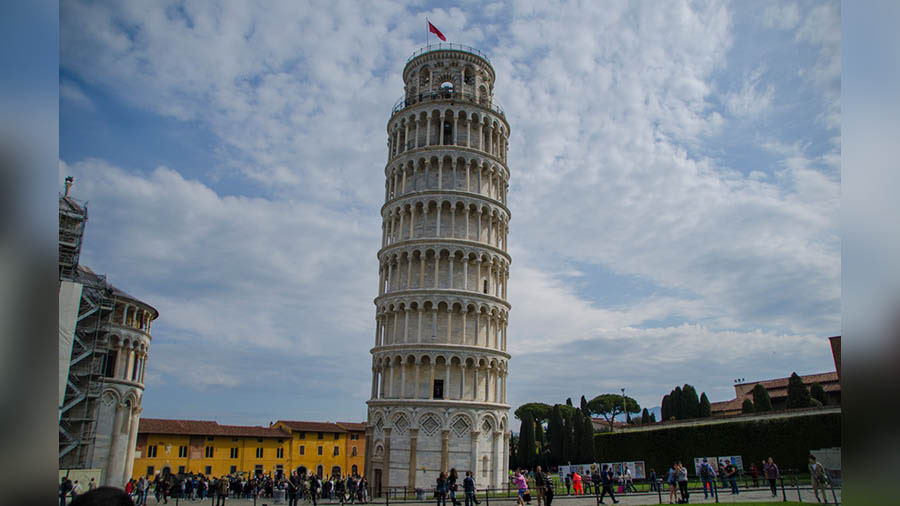One of the things that come to anyone’s mind when someone mentions Italy is the Leaning Tower of Pisa. Not to be confused with pizza, which is ironically also a contribution from Italy, but has no connection with the tourist town of Pisa. Located in the Tuscany region, which is often considered the most picturesque part of Italy, Pisa is just 52 miles (85km) from Florence, another major tourist town, thus making it ideal for a quick day trip.
When you are in Pisa, it’s not just the Leaning Tower of Pisa that you would be visiting. There are many monuments, churches, and museums located around the same vicinity.
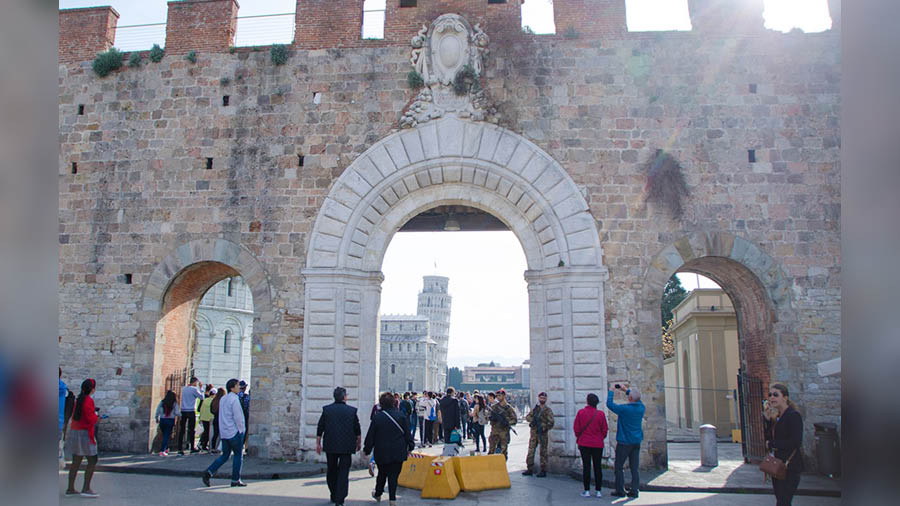
Porta Nuova – The North Gate of Piazza del Duomo
The Leaning Tower of Pisa is actually a bell tower that is a part of the Pisa Cathedral. The bell tower is situated right next to the cathedral, which in itself is also a major tourist attraction with beautiful architecture but unfortunately, it’s the bell tower that has caught the attention of the world. Had this been not leaning, I doubt it would have been that popular a tourist site, but its tilt and the fact that it is still standing in the same manner for so long has made it truly unique.
History Of The Bell Tower
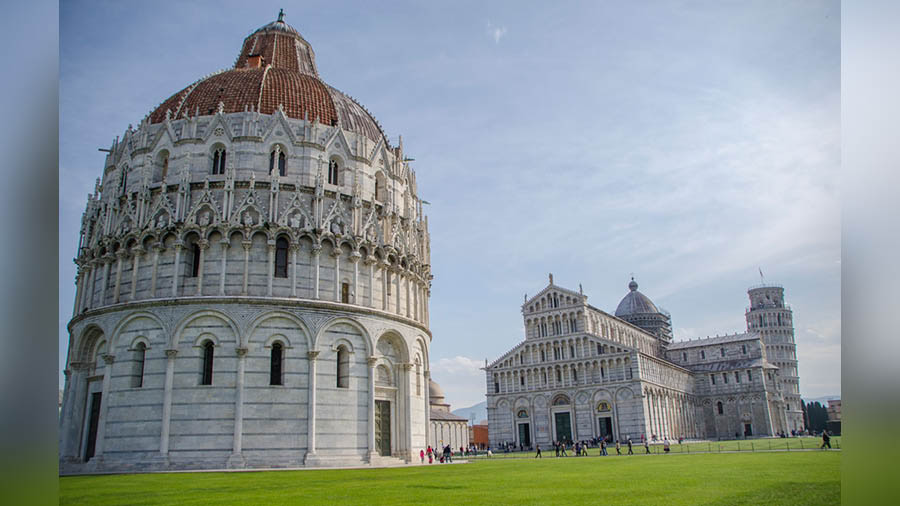
The Piazza del Duomo
Pisa was once one of the most wealthy provinces in Italy and to show its wealth it was decided that a grand cathedral be built and along with that a very tall bell tower. The height of the bell tower would let people from far know of its presence.
The place, where we now see the bell tower, is actually within a grand complex consisting of the cathedral, cemetery, baptistery, etc. Together this is known as the Piazza del Duomo.

Cattedrale di Pisa (Pisa Cathedral)
The construction of the bell tower started in the year 1173 under the guidance of architect Bonanno Pisano and from the very beginning the tower was doomed. The main fault was the soil around the ground on which the construction was being done. The soil mainly consisted of soft clay and fine sand. Added to this were fine deposits of shells, which resulted in a concussion of a very soft unstable base.

Exterior of Cattedrale di Pisa (Pisa Cathedral)
By 1178, the tower had already started tilting a bit towards the south and by now the construction was not even completed. Even before the tower could be completed another disaster struck when the city was at war with its neighbors — Genoa, Lucca, and Florence. This delayed the completion of the tower for another 100 years. During this time, the bell tower had leaned a little further. The next phase of the construction was taken up by Giovanni di Simone and his main challenge was to correct the lean.
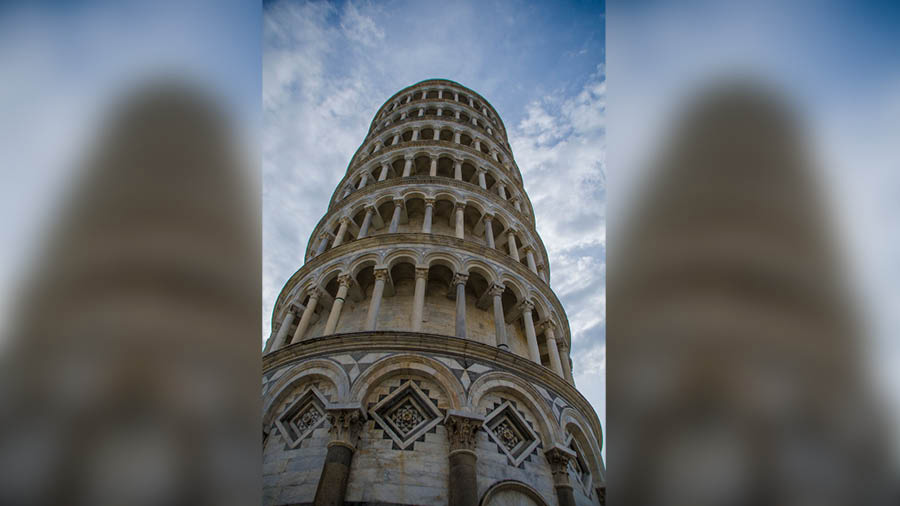
The final construction of the tower ended in 1372
When the eighth floor of the tower was being constructed, the builders tried to compensate for the tilt by making this floor angle more towards the north. This proved counterproductive, as the additional weight of the top floor aggravated the tilt.
The final construction of the tower ended in 1372, under the guidance of Tommaso Pisano, covering over 200 years. However, the tower continued to tilt more over the centuries. It was only in 1990 that it was decided that something drastic had to be done, else it could collapse and thus began a lengthy process to stabilise the structure. The process was completed in 2001 and the tower had successfully been corrected by around 1.5 feet. This was done by removing a portion of the ground soil under the northern section, giving it space to slightly tilt in the other direction.
What else to see at Piazza del Duomo
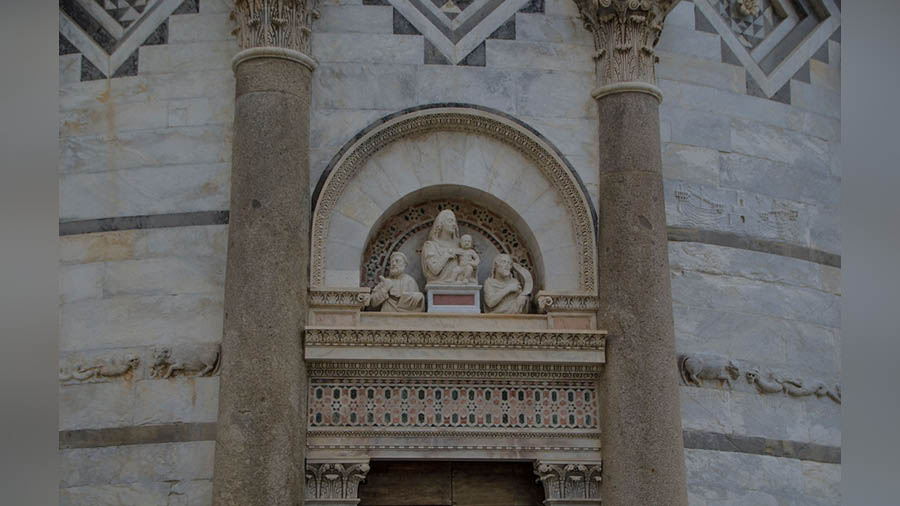
The doorway leading to the top of the tower
Battistero di San Giovanni: As you enter through the gates (Porta Nuova) the first structure that you see is the Battistero di San Giovanni (Pisa Baptistery of St. John). Replacing the older building, this new building was constructed in 1152 and was designed by Diotisalvi.
Cattedrale di Pisa: The second building is the actual cathedral Cattedrale di Pisa (Pisa Cathedral). Keep in mind that this is a functioning church and is the seat of the Archbishop of Pisa.
Camposanto Monumentale: On the left-hand side of the massive compound is the Camposanto Monumentale (Monumental Cemetery). If you are an art lover, then do not miss this, as the walls around here have some beautiful frescoes.
Capitoline Wolf: The Capitoline Wolf (Lupa Capitolina) can be seen right behind Cattedrale di Pisa. The wolf is considered the symbol of Rome, a mythical she-wolf suckling the twins, Romulus and Remus, from the legend of the founding of Rome. Numitor, the grandfather of the twins, was overthrown by his brother Amulius and ordered them to be thrown into the Tiber River. They were rescued by a she-wolf who cared for them until a herdsman, Faustulus, found and raised them.
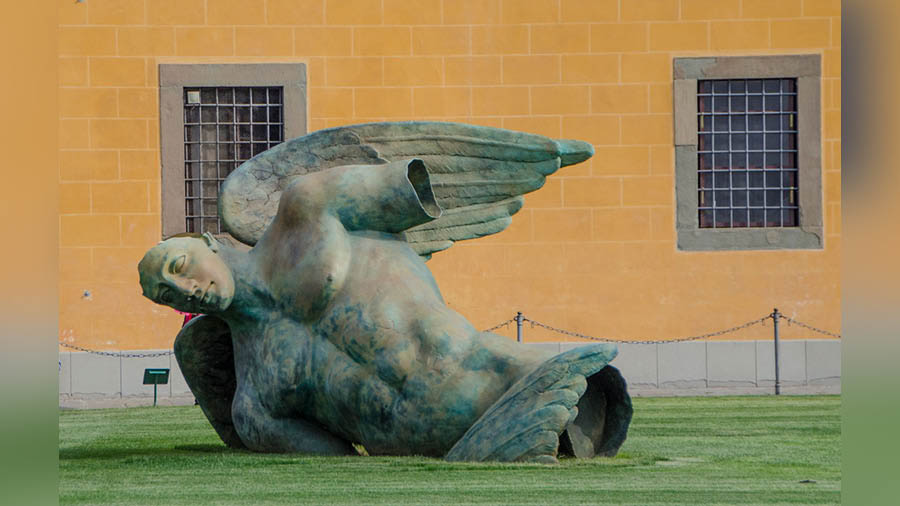
The Fall of Icarus, in bronze
Fall of Icarus: Another famous bronze statue that you will see here is the Fall of Icarus. Apart from these, you can see Fountain with Angels (Fontana dei Putti) and the Museum of the Opera of the Cathedral (Museo dell'Opera del Duomo), which was previously an Episcopal Seminary that had been converted into a museum in 1986. This museum has a good collection of sculptures and paintings.
Travel Tips:
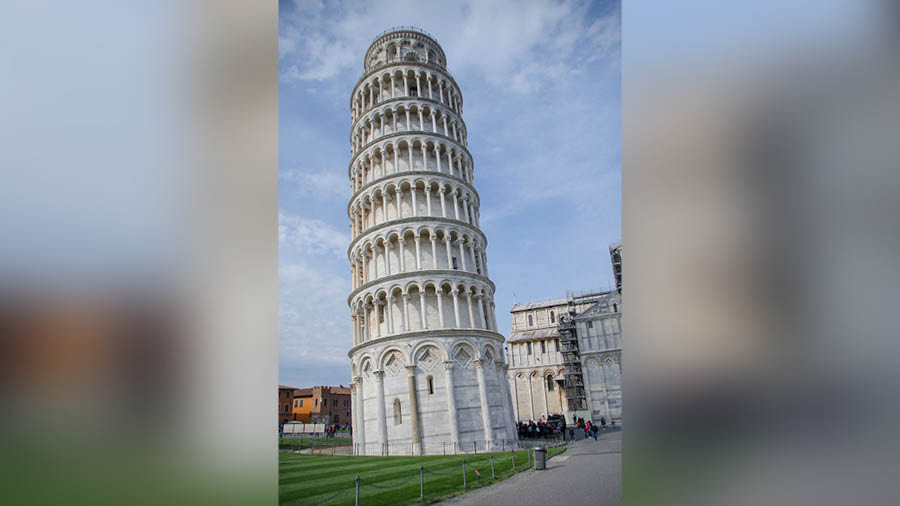
Expect a long queue for climbing up the tower
- You do not require any tickets to roam around Piazza del Duomo, the only ticket that you need is when you want to climb up the Leaning Tower of Pisa.
- Expect a long queue for climbing up the tower as tourists are sent in batches as the passages around the tower are very narrow.
- Pisa can easily be covered in a day trip from Florence and can be reached by train or by a more expensive taxi ride. If you have the budget then you can also avail of a short flight from Florence to Pisa.
Working for more than a decade in the book retail & publishing industry, Subhadip Mukherjee is an IT professional who is also into blogging for over 15 years. He is also a globetrotter, heritage lover and a photography enthusiast.
